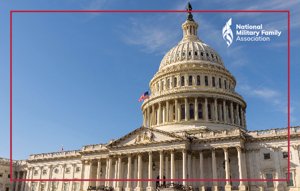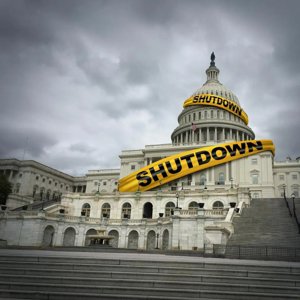The U.S. federal government officially shut down at 12:01 a.m. EDT on October 1, 2025, after Congress failed to pass a funding bill to sustain government operations. The shutdown occurred due to a deadlock between Democrats and Republicans, including President Donald Trump, who have been unable to agree on a temporary funding arrangement. Democrats, led by Senator Chuck Schumer and Representative Hakeem Jeffries, insisted on extending enhanced tax credits under the Affordable Care Act as part of any funding deal, which Republicans opposed. The Senate failed to pass either party’s funding proposals, with a Republican bill not overcoming the 60-vote filibuster threshold despite receiving majority support. As a result, numerous federal employees have been furloughed or are working without pay, and several government services have been suspended or delayed. The White House and political leaders from both parties blamed each other for the shutdown, which marks the first since 2018–2019 and the third under President Trump’s administration. Before the shutdown, Trump threatened potential reductions in government benefits affecting large numbers of people during the shutdown.
When the U.S. federal government shuts down, many government operations stop or are severely limited due to a lack of funding. Key consequences include:
- About 40% of the federal workforce, approximately 800,000 workers, are placed on unpaid furlough or required to work without pay. Essential workers such as air traffic controllers and TSA agents continue working but do not get paid until funding is restored. This causes financial hardship and uncertainty for many federal employees.
- Government services considered non-essential pause. National parks and museums often close, passport processing and other administrative functions slow down, and some federal loan programs and hearings are delayed or canceled.
- Mandatory spending programs like Social Security, Medicare, and Medicaid continue to operate, but related services like benefit verification may sl
- ow.
- Air travel may experience delays due to absent or sick call-ins by air traffic controllers.
- Federal contractors and some hourly workers may lose wages as they are typically not paid during shutdowns.
- Emergency services and critical agencies such as FEMA continue operating but face challenges due to limited funding.
- The economy experiences a negative impact during shutdowns, with reduced government activity and halted services.
The 2025 shutdown similarly affects many federal employees and disrupts various public services until a funding deal is reached to reopen the government

What happens next with the US government shutdown?
When a U.S. government shutdown occurs, the government partially closes because Congress has failed to pass funding legislation. What happens next typically involves:
- Federal agencies implement shutdown plans, furloughing non-essential employees and continuing only essential operations focused on safety and national security.
- Political negotiations continue between the President, Senate, and House to reach a funding agreement or temporary continuing resolution to reopen the government.
- The shutdown can last days or weeks depending on how quickly lawmakers find a compromise. During past shutdowns, pressure from economic disruptions, public inconvenience, and political backlash has motivated eventual agreements.
- Both parties engage in negotiations often involving concessions on budgetary priorities or policy demands. In 2025, the stalemate centered on disputes over tax credits and welfare payments.
- The President and congressional leaders may hold meetings to resolve the impasse.
- Once an agreement passes both chambers and is signed, federal funding is restored and furloughed employees return to work, usually with retroactive pay.
The current 2025 shutdown began October 1 amid partisan gridlock with no immediate resolution. The likelihood of the government reopening depends on whether enough Senate Democrats break ranks to pass a House-approved continuing resolution or a bipartisan deal emerges. Until then, government services remain limited, and many federal workers remain without pay.
How does a shutdown affect the military?
During a U.S. government shutdown, the military continues to operate but faces several impacts:
- Active-duty military personnel, including reservists on active federal duty, must continue reporting for duty and carrying out their assigned responsibilities. Their work is considered essential for national security and defense.
- Military personnel and civilian employees in the Department of Defense who are deemed “excepted” or essential will work without pay until government funding is restored. However, back pay is generally guaranteed once a funding deal is reached.
- Some National Guard members deployed under federal orders may be required to work without pay during the shutdown, depending on whether their missions are classified as critical.
- Military operations related to national defense, ongoing missions (such as in the Middle East), border security, and key projects like missile defense proceed with priority.
- Certain military family services and support programs may be reduced or delayed, including commissary operations (though they can continue for a limited time).
- Civilians working for the military who are non-essential may be furloughed.
- Military pay for the period before the shutdown is typically disbursed on time, but future paychecks may be delayed if the shutdown lasts beyond a few weeks, unless Congress passes specific legislation to ensure continuous pay.
Thus, while the military remains operational during a shutdown due to its essential role, personnel may face financial and logistical challenges until normal funding resumes

The US government has shut down. Here’s what to know
The U.S. government shutdown that began on October 1, 2025, means that many government operations have paused due to Congress failing to pass a funding bill. Around 40%, or approximately 800,000, federal workers are furloughed and will not receive paychecks until the government reopens, though back pay is usually granted after shutdowns end. Essential services such as air traffic control, TSA security, and emergency operations continue but without immediate pay. Non-essential services like national parks and museums are closed, passport processing may be delayed, and many federal contractors lose work. Social Security, Medicare, and Medicaid continue, but benefit verification services may slow. The shutdown negatively impacts the economy, with the Congressional Budget Office estimating payroll disruptions costing roughly $400 million per day initially. Political leaders from both parties blame each other for the impasse, and negotiations continue to resolve the deadlock. Meanwhile, federal workers and services face ongoing disruption until a spending agreement is reached.
Government shutdown begins as nation faces new period of uncertainty
The U.S. government shutdown beginning October 1, 2025, has triggered a new period of uncertainty across the nation due to a failure by Congress and President Trump to agree on a funding deal. The shutdown means hundreds of thousands of federal workers are furloughed without pay, with an estimated daily payroll impact of about $400 million. Essential workers like TSA officers and air traffic controllers continue working but do not receive paychecks until the government reopens. Many government services pause, including national parks, museums, visa and passport processing delays, and reduced support from agencies such as the CDC and NIH. Social Security and Medicare payments continue, but benefit verifications may be delayed. The shutdown has heightened economic anxieties for workers, contractors, businesses relying on federal operations, and the general public facing service disruptions. Political leaders from both parties blame each other, and negotiations are ongoing with no immediate resolution in sight. The shutdown could last days or longer depending on whether lawmakers find compromise on key issues such as healthcare tax credits.
